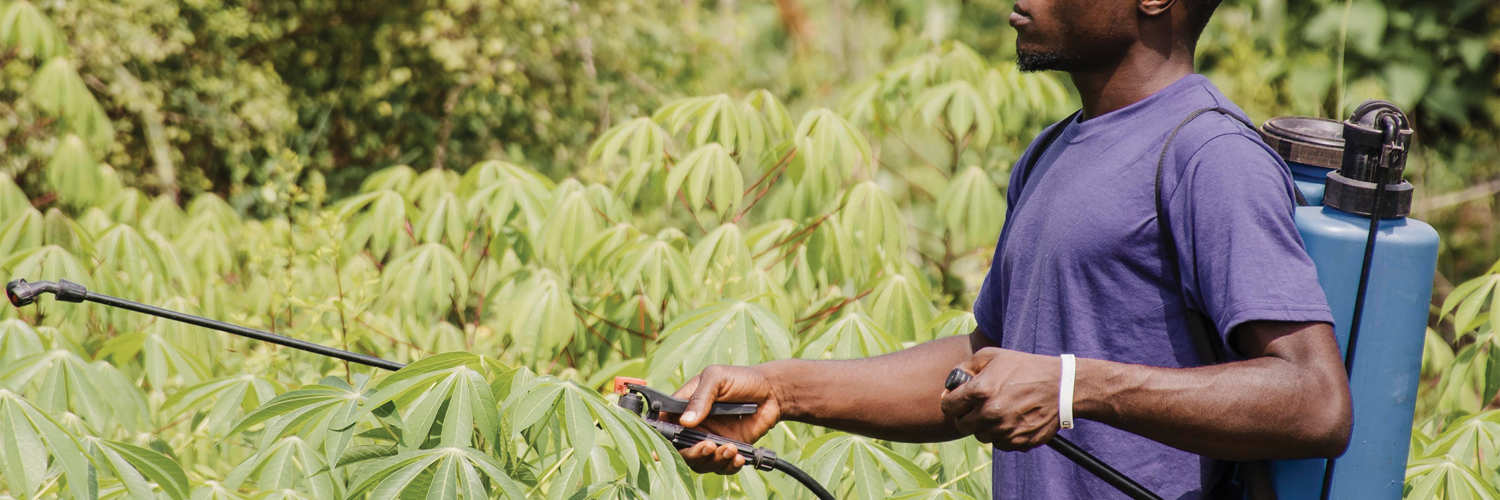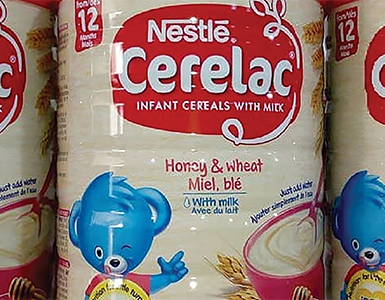SAGA: New probe into herbicide widely used by global farmers identified as possible cause of low birth weight and premature births…
By Nick Houtman and Len Maseko
Increased exposure to glyphosate, one of the most widely used herbicides in the United States, South Africa and many parts of the world, can cause low weight among newly born babies and early birth, according to a new study by two American economists attached to the University of Oregon.
The findings by the economists Emmet Reynier and Edward Rubin will add to the long-running controversy surrounding the continuing use of the herbicide, which has been associated with cancer, respiratory effects (lung and nose), such as irritation in the nose, or asthma, in people using glyphosate products.
Glyphosate is classified as herbicide rather than a pesticide and it is used by farmers world-wide to kill weeds and plants. It is produced by a transnational agribusiness Monsanto (now owned by German multinational Bayer) under the trade name RoundUp. It has been controversial in the European Union and some other countries, due to its suspected cancer-causing risks.
This is not the first time Glyphosate has been linked to adverse reproductive effects. Four human studies in recent years found that glyphosate exposure during pregnancy was associated with reproductive effects.
These effects included preterm birth, shortened gestational duration and reduced fetal growth As of January 2025, over 165 000 lawsuits have been filed against Bayer, of which made settlements to the tune of R202 billion ($11 bn) to date, but only to some of the litigants. It has won some lawsuits against it.
Yet, despite the raging controversy surrounding the herbicide, and multiple lawsuits in the US against Bayer, it is still being used herbicide globally, including in South Africa, since its approval for use in the European Union was extended in 2017, despite calls for its banning.
Glyphosate-based herbicides are manufactured by at least 91 producers in 20 countries and have been registered in more than 130 countries since 2010.
In 2012, a University of Pretoria professor published a study showing that glyphosate is marketed under more than 20 trade names in South Africa, is extensively used in the timber, horticulture, sugar and viticulture industries, but that the main users of glyphosate in South Africa are maize, wheat and soybean farmers. At the time, these staple-crop farmers used 65% of all glyphosate sold in SA.
In a paper published on January 14 this year, in the journal Proceedings of the National Academy of Sciences, economists Emmett Reynier and Edward Rubin show that a dramatic increase in the use of glyphosate in the US counties most suitable for genetically engineered crops lowered birthweight among babies and gestation, the number of weeks from conception to birth.
The US Environmental Protection Agency (EPA) first approved glyphosate for use as an herbicide in the United States in 1974. The EPA also found that the herbicide is unlikely to cause cancer in humans. In 2022, the EPA’s findings were challenged in court and voided by the US Court of Appeals for the 9th Circuit. They are still under review.
Glyphosate kills plants that are not genetically modified to withstand the herbicide. In the US, farmers can use it to kill weeds in fields planted with crops such as genetically modified corn, soybeans and cotton.Since the introduction of genetically modified crops, annual glyphosate use in the US has increased about 750%, according to a report from the US Geological Survey.
“We had heard some pretty broad claims about the effects of pesticides on health that seemed to be based more on correlations than on causal effects,” Reynier said. “We know people are concerned, and we wanted to make sure we were looking at this rigorously.”
In their study, the researchers evaluated human health effects using three types of existing data for rural US counties: genetically modified crop suitability, historical pesticide applications and birth records.
Using data on births from the US Department of Health and Human Services, Rubin and Reynier selected a set of more than 9 million birth records in rural counties from 1990 to 2013. All the data were anonymous. Identifying information, such as the precise locations of crop fields and birth parents’ homes, was not included.
The results implied that at average levels of glyphosate exposure, average gestation was reduced by one day and average birthweight was reduced by 23–32 grams (about 1 ounce).
“What this means is that, for whatever reason, if an infant is expected to be at the very low birthweight end of the scale, then glyphosate exposure could affect you more,” Rubin said. “It’s like being sick and then getting hit with another illness. You’re more vulnerable.” “I think something has to change,” Rubin said. “Regulators could admit that glyphosate exposure presents some concerns for human health. There’s mounting evidence that it could be detrimental.”
In addition, he said, there could be greater monitoring of glyphosate use and exposure as well as human health.
* WSAM could not reach the Department of Agriculture by the time of going to press. Since September 2024, Daily Maverick reports it has repeatedly asked the Department of Health if it has considered a ban or strengthening restrictions on the use of glyphosate and any other herbicides or pesticides used in commercial food-crop farming. It has yet to receive a response.
GLYPHOSATE: THE OVERVIEW
How is glyphosate used in South Africa?
Hundreds of thousands of farmworkers countrywide, working in wheat, maize, soy, sugar, grape farming, as well as in timber and horticulture, are routinely heavily exposed to these chemicals through their work.
In addition, glyphosate residues are in processed food products (packaged sliced bread and mielie meal, to name just two staple foods in South Africa) with absolutely no regard for their possible impact on human health.
What portion of South Africa’s maize is genetically modified?
In South Africa, the use of glyphosate has been growing. According to the African Centre of Biodiversity, half of South Africa’s maize crop and 100% of the soya crop is genetically modified, meaning it has to be grown with the use of glyphosate.
According to Christo Joubert, from the Market Economic Research Centre at the National Agricultural Marketing Council, South Africa consumes nearly 27 000 tons of maize daily.
It is unclear what portion of this is genetically modified maize.
What are the claims?
The lawsuits claim that glyphosate exposure can cause cancer, including non-Hodgkin’s lymphoma, multiple myeloma, and B-cell lymphoma.The lawsuits claim that Bayer failed to warn people about the health risks of glyphosate.
What has been the highest individual claim so far?
A Philadelphia jury delivered a (R1,5 billion) $78 million verdict in October last year against Monsanto (Bayer), finding that the company’s weed killer, Roundup, was the reason an Abington man developed blood cancer. William Melissen (51) used Roundup frequently for nearly three decades starting in 1992. He was diagnosed in 2020 with non-Hodgkin’s lymphoma.
What proportion of wheat grown in South Africa is exposed to glyphosate?
Daily Maverick reported last year that this is not known, though the publication quoted a 2014 study confirming that glyphosate was present in 88% (seven out of eight) of white bread samples tested (the concentrations of glyphosate were not specified).
A 2021 scientific study in South Africa confirmed the presence of glyphosate in maize and soy grown in South Africa. – Additional sources: Cancer Association of SA, Daily Maverick, Generative AI, Reuters

































